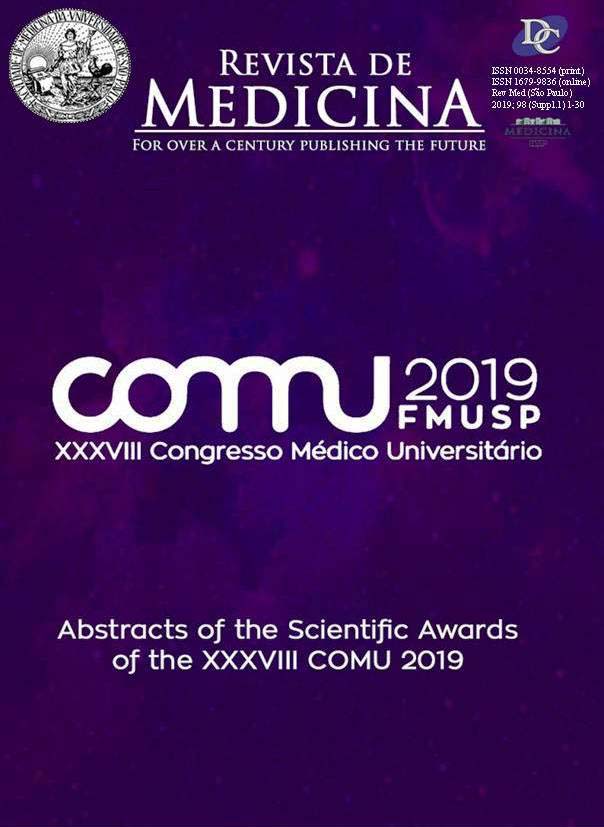Thrombotic storm and malignancy in elderly woman: a case report
DOI:
https://doi.org/10.11606/issn.1679-9836.v98iSupplp19-19Palavras-chave:
Cholangiocarcinoma, Thromboembolism, Necropsy, Hypercoagulability, Hepatic nodulesResumo
Thrombotic storm is a state of hypercoagulability of relevance in the context of neoplasias, trauma, gestation, autoimmune diseases and deficiencies of coagulation proteins. The following case brings this topic associated with weight loss and a subsequent atypical primary site of neoplasm found in postmortem biopsy.
Objectives: To present an atypical case of thrombosis in several sites in elderly women in a context of consumptive syndrome without definite primary cancer site; to discuss differentials and pathophysiological processes relevant to the case.
Case report: A 74-year-old female patient, previously healthy, presented a constipation associated with weakness in right superior limb, edema and weakness of left lower limb, with difficulty in gait and subsequent bed restriction. It evolved with multiple thrombotic events (axillary arterial, segmental branches of the left pulmonary artery, hepatic, renal and splenic parenchymal infarction, deep venous thrombosis in the common femoral vein, superficial femoral vein and left femoral vein, and right superficial femoral vein thrombosis). Abdominal computed tomography (CT) showed hepatic nodules suggestive of metastases and lymph node enlargement up to 2.0 cm. Hepatic biopsy was performed by interventional radiology resulting inconclusive due to extensive areas of necrosis. Laboratory tests revealed hepatic enzymes, canalicular and direct bilirubin with increased and increasing values, normochromic normocytic anemia worsening and with increasing values of RDW and platelets. Ca19.9 accounted for > 1,000 U / mL. FAN, anticardiolipin IgM and IgG, lupus anticoagulant, ANCA negative. Death verified 12 days after admission, despite intensive care. Necroscopic report showed adenocarcinoma centered in bile ducts involving gallbladder and extra and intrahepatic bile ducts with vascular dissemination (pulmonary and lymph node metastases) and extension to gastric wall and small intestine. Post-mortem diagnosis of cholangiocarcinoma was performed.
Discussion: the case discusses is of multiple thrombotic events in unusual sites associated with non-specific findings at the beginning. The hypothesis of phospholipid antibody syndrome (APS) was proposed although it is unlikely in an elderly patient. Subsequent evaluation for thrombophilias was not done since weight loss and abdominal CT with multiple hepatic nodules suggested neoplasia of indeterminate site. Hence, SAF was discarded and the patient died without diagnosis of primary site due to the difficulty of the case.
Conclusion: neoplasia of uncommon sites can be a disease of hard diagnosis and management especially in patients worsening in a short time. However they must be considered with proper investigation in patients with multiple thrombotic events due to the very known association with these findings.
Downloads
Downloads
Publicado
Edição
Seção
Licença
Copyright (c) 2019 Revista de Medicina

Este trabalho está licenciado sob uma licença Creative Commons Attribution-ShareAlike 4.0 International License.




